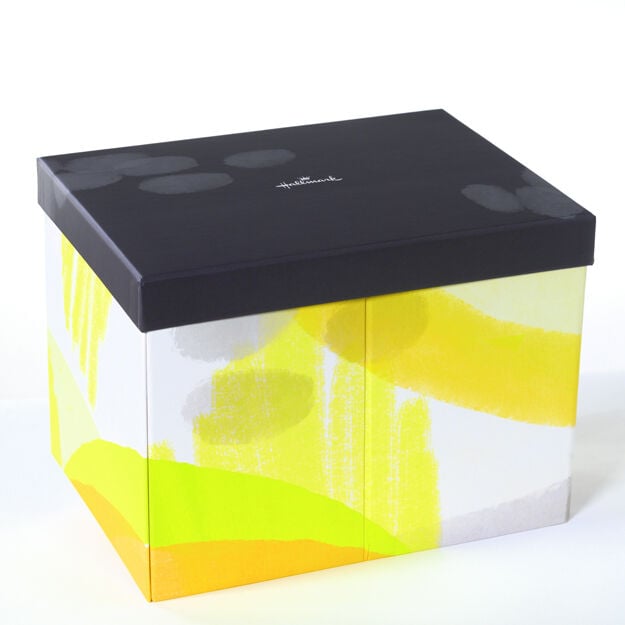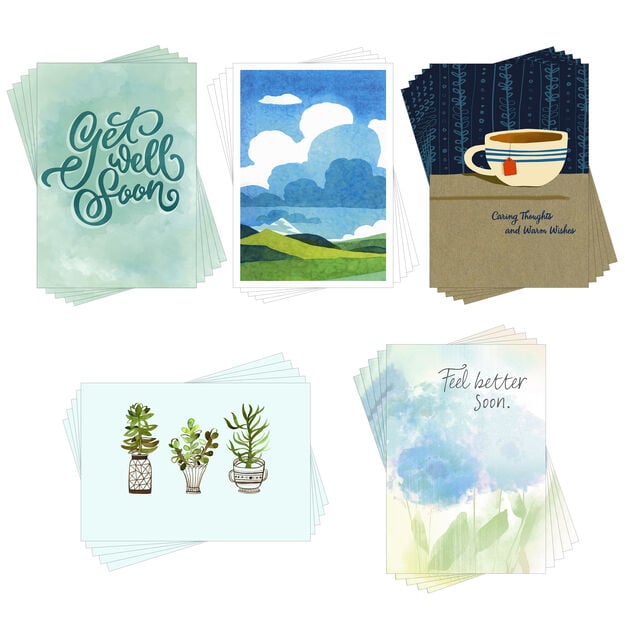Get an A+ in Student Encouragement: Creative Ways Teachers Can Encourage and Connect with Students

Teachers are some of the best cheerleaders in kids’ lives, and they’re always on the lookout for great ways to inspire, encourage and support their students. Whether it’s in the classroom, at Sunday school, in front of the piano or on the field, the tools educators use to connect with kids can help young learners develop communication skills, confidence and, ultimately, overall success.
There’s so much to a teacher’s job that we’re all left wondering how they manage to get it all done! With just a smidge of paste, a few sheets of construction paper and a handful of pipe cleaners, teachers can craft a diorama of the solar system, show a Venn diagram example and help little hands make crafts to take home … all while teaching new math concepts and making sure no one gets lost on the way to the cafeteria. Whew!
And somehow, educators still find time for making and building connections with each student they teach. Why? Because they know that those personal connections are some of the most valuable (and memorable) things that students will carry with them as they continue to grow and learn.

Creating a Positive Environment for Students
Every year, parents and students are awed by elaborate classroom decorations that teachers put up as they’re preparing for Back to School Night, and if anyone wonders why they go to all this trouble, it’s because they love their students. Teachers are excited to see who walks through that door at the start of each new year, and they want their students to be excited, too. They know they will only have the children in their classrooms for a short while, so it’s important to make the most of their time together.
The great thing about teachers is that they’re full of ingenuity and creativity—and they know that doing little things throughout the year to connect with their students doesn’t have to be costly or difficult. It just takes a whole lot of love and a little bit of inspiration. (That’s where the pros at Hallmark Business Connections come in … we’re full of fun ideas, and we love to help teachers!)
We’ve rounded up ten super-fun, budget-friendly and easy-to-pull-together ways teachers, coaches, tutors and anyone who works with and wants to encourage young learners can use to connect and inspire. So whether you’re in a traditional classroom or you need some go-to plays to back up your coaching style, you’re sure to find a few ideas you’ll want to try:
Kick the day off with a fun hello. Greet students at the door to your classroom with a fun welcome to kick off the day. A creative way to do this (and one that is comfortable for every student) is to let students choose between a fun handshake, a cool elbow bump or a creative salute. Come up with a variety of options and always offer an option that involves no physical contact for your learners who aren’t comfortable with physical touch. This also works for greeting team members as they arrive for practice or a big game, or use it as a way of calming nerves as scouts arrive at camp or as kids are dropped off at summer camp. No matter where you teach, when you greet each kiddo individually, you’ll kick the day off in a positive way and let them know that you care about how they are feeling.

Make learning fun. Get students engaged in learning activities by changing things up. Try turning something that’s traditionally a straight memorization exercise into a fun relay-type race or memory game that everyone can participate in. For example, play a game of Telephone to see how many things students can remember from one end of the party line to the other. Or if you’re a music teacher, try teaching notes and scales with a game of Add-On by having students start by playing one or two notes, then progressively add on notes until the tune gets so long that they can’t play it by memory. Games like these can be modified to work for coaches, Sunday School teachers and other educators, too. By turning learning activities into a game, students will see that learning can be entertaining, as well as productive.
Encourage and support kids with greeting cards. Every student has ups and downs. Be sure to notice the little personality nuances that indicate someone may be having a tough day and offer subtle pick-me-ups and day brighteners when the need arises. On the flip side, take note of stellar moments that really stand out and make them even more memorable by dropping a card onto a hardworking student’s desk. Hallmark Business Connections has a full line of encouragement and birthday cards that are perfect for students, so stock up and have plenty on hand when occasions arise. Write personal notes of encouragement for students inside to make each card even more meaningful.

Pro tip: At the beginning of the school year, make a note of everyone’s birthday on your calendar. That way, you’ll be prepared to wish every student a happy birthday when it’s their special day.
Create a bucket-filler bulletin board. Bucket filling is a way of showing kindness to others by sharing compliments, motivational words for students, encouraging phrases and sayings for students and other nice thoughts. Encourage your students to lift each other up by regularly setting aside time for them to fill the buckets of their peers and leave compliments about the great things they’ve done that day or week. To create a bucket-filler bulletin board, gather enough small containers for each child in your classroom (think inexpensive containers like whipped topping containers or tissue boxes); then label them with students’ names. Provide slips of paper with short prompts like “I like the way you …,” “Way to go on …!,” “Congrats on …!” and more. Be sure to leave some blank slips to encourage kids to be creative with their bucket-filling ideas, too, and remind everyone that it’s always nice to point out their friends’ hard work and cooperation in the classroom.
Nominate a student of the week. From line leader to special tasks that need to be accomplished, your student of the week is your person for the job! Everyone likes having the chance to feel special and be the one responsible for important tasks, and this is a great opportunity for you to get to know each student a little better, too. Create a printout ahead of time, so that each student of the week can fill in things like hobbies, favorite foods and colors, and include a few details about their family and pets, too. Make sure they get the star treatment all week long and boost their confidence by showing interest in the things they want to share with you and the class. For coaches, it’s fun to nominate an athlete of the week by choosing someone who shows exceptional teamwork, leadership or improved skills. You can make this player the honorary captain for the week, send home a piece of team memorabilia for them to enjoy (like a trophy) or even surprise them with a sweet treat at the end of practice. Kids are motivated by positive reinforcement, and they’ll love working toward their turn at being student or athlete of the week!
Give praise freely. Even the youngest students begin to feel pressure to succeed early on, so be sure to alleviate some of their stress by recognizing the good things they do on a day-to-day basis. The same goes for sports players, musicians, artists and even young scientists. If there’s a competition available for their area of interest, there’s pressure—and you can offset some of it with praise and recognition. Hard work should be noticed, and especially when students are struggling or working exceptionally hard, a few small acts of kindness and words of understanding can make a world of difference when it comes to their academic, athletic and personal success. When you stock up with an assortment of encouragement notecards for kids, you’ll always have the perfect one on hand when you need to leave a little note of support.
Add five-minute brain breaks to the day. Kids can get into a rut, just like we can. If you sense the day is dragging, or if you’re teaching a difficult topic, break the day up by offering fun five-minute breaks that give students the chance to use their creativity and stretch their muscles. Consider quick games like whiteboard Pictionary or a Guess Who? game to learn more about each other. If kids are having trouble with skills on the field, on the court or performing in front of a crowd, try taking their minds off of their frustration with a quick water break, relay race or one-minute dance party. Or if the learning environment is getting a little too stressful for everyone, slow things down with mindful breathing and relaxation.
Create learning centers throughout your classroom. If you’ve already done this, consider freshening things up by adding a sensory center that’s filled with items to stimulate all five senses and encourage creativity for every student. Or review your centers to be sure you’ve got a variety for your students and their different interests. Reading and writing centers may be perfect for some learners, while hands-on building centers might work for others. Change things up often and add new items to each center frequently to keep kids interested and coming back for more hands-on learning fun.
Celebrate progress and effort. Create a poster or bulletin board that celebrates student success. Add a star or smiley face for each activity completed or stage successfully reached so that students are able to visibly track their progress. This is a great way to help students set goals and celebrate their success when they reach set milestones along the way. This can be done for any learning environment, so if your little learners are practicing piano, violin or the oboe, post a chart full of fun stickers to celebrate their milestone moments. Or if you’re a coach or a physical education teacher, you can keep athletes energized by posting a running tally of goals met and top scores achieved on a poster in the gym for all to see.
Surround them with positivity. Whether you love quotes, posters or fun puns, when you fill your learning area with positivity, students will absorb the messages. Posters and decorations filled with inspirational phrases and statements for students are often low in cost and easy to hang around your classroom or learning area as fun daily inspiration. It’s important for your classroom to be a place of positivity for every student, because positive thinking teaches kids to be resilient and look for the good in every situation … plus your classroom could be the only place where some students are able to find the support and reinforcement they need. Whether students are meeting you on the field, in front of the piano or in front of the white board, they’ll soak up all the positivity you’re sending their way.

The Benefits of Connecting with Students
When you build strong connections with your students, you’re letting them know how much you care about them, not just about their school performance, but also about their personal well-being. By creating a learning environment where young learners feel valued and appreciated for who they are, you’ll be lifting up individual students and encouraging them to give their best every day. You’ll see more trust and motivation from your students, improved learning outcomes and more smiles as you build relationships that focus on trust and understanding. Students who are motivated by teachers, counselors, coaches, mentors and other adults they interact with on a regular basis are likely to set their sights high and aim for success because of the positive adult support they have received along the way.
In this Article
Products
Similar Articles

Leading Boldly Through Change with Katarina Berg
Dec 19, 2025
The Heart of the Hustle with Claude Silver
Nov 04, 2025




